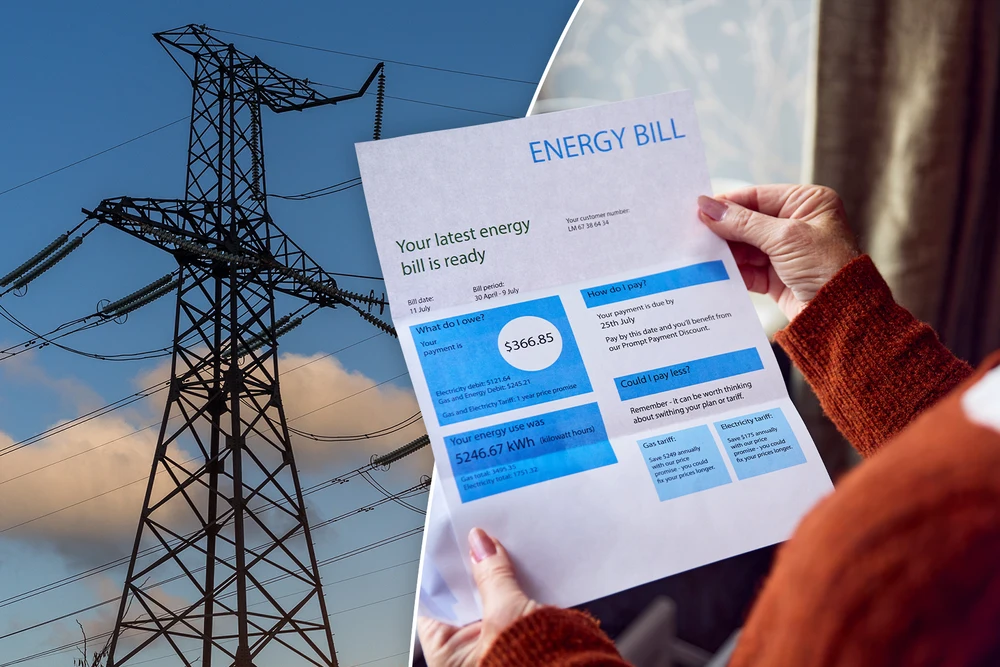
Australian households are bracing for another round of electricity price hikes, with the Australian Energy Regulator (AER) announcing draft increases to the Default Market Offer (DMO), set to take effect from mid-year. The decision lands just as the country heads into a federal election, placing cost-of-living and energy policy squarely in the political spotlight.
Under the draft determination released Thursday, benchmark electricity prices are set to rise by up to 8.9 % in parts of New South Wales, 5.8 % in south-east Queensland, and 5.1 % in South Australia. Although lower than the 20 % surges seen during the 2022 energy crisis, these increases still outpace current inflation rates.
Claire Savage, Chair of the AER, said the regulator had thoroughly scrutinised the pricing components.
“We know that cost-of-living pressures are front of mind for many households and small businesses,” Ms Savage said. “We’ve seen cost pressures across nearly every component of the DMO and have ensured prices fairly reflect the cost for retailers to supply electricity.”
The DMO serves as a price cap for customers not on competitive market offers in NSW, the ACT, south-east Queensland, and SA. Though it directly affects only about 10 % of customers, it sets the benchmark for broader retail tariffs. Current DMO annual prices range from around $1,800 in NSW to over $2,200 in SA for an average household.
Victoria’s equivalent to the DMO, determined by the Essential Services Commission, is expected to see a more modest rise—less than 1 % for households (about $12 a year) and under 3 % for businesses.
Western Australia, Tasmania, and the Northern Territory operate under separate arrangements.
Gavin Dufty, national energy director at St Vincent de Paul, said the DMO should be a safety net, not a default, and rising prices underline the importance of finding better market offers.
“You’ve got to get off your seat and shop around,” Mr Dufty urged. “That’s where the real savings are.”
Political Reactions and Election Implications
Energy Minister Chris Bowen defended the government’s actions, noting efforts to cushion bill impacts.
“The Albanese government’s plan is the only one providing bill relief now and a path to a clean, cheap, reliable energy future,” Mr Bowen said.
There is speculation the government may extend the $300 energy rebate scheme in the lead-up to the election. The Opposition, however, labelled such relief measures as unsustainable.
Shadow Energy Minister Ted O’Brien said the Labor government had failed to deliver on its pledge of lower power bills.
“Three years ago, Anthony Albanese and Chris Bowen promised cheaper power bills. Instead, they’ve delivered among the highest electricity prices in the world,” Mr O’Brien said.
Cost Drivers Behind the Hike
Electricity prices had stabilised somewhat last year after back-to-back hikes of up to 40 % in 2022 and 2023. However, costs are now climbing again, mainly driven by the wholesale generation market and electricity network infrastructure.
While generation costs haven’t soared as they did post-Ukraine invasion, they remain elevated—particularly in NSW and SA. Energy Edge consultant Josh Stabler noted that while price spikes are less dramatic than during the 2022 crisis, there’s no significant drop either.
The Institute for Financial Analysis and Energy Economics (IEEFA) attributes the ongoing price pressures to fossil fuels, particularly gas. A Griffith University study cited by IEEFA found that gas influences electricity pricing 50 to 90 % of the time, and its rising costs have amplified impacts on the market.
Coal plant outages and ageing infrastructure are also adding to costs. AER Chair Savage last year warned of a “wall of capex” heading towards consumers, referencing large-scale capital works, increased cybersecurity costs, and climate resilience spending.
What Households Can Do
Despite price pressures, there are still ways for consumers to cut energy bills. Rooftop solar and storage are front and centre, with insulation upgrades and appliance efficiency also playing key roles.
“Households and businesses could save money on their energy bills by reducing the volume of electricity they purchase from the grid,” said IEEFA analyst Johanna Bowyer.
Mr Dufty echoed this, encouraging consumers to use power during solar-rich periods in the middle of the day to benefit from cheaper prices.
He also stressed the importance of checking eligibility for energy concessions, noting only 40 % of eligible customers currently receive them.
Call for Structural Reform
Dufty called for government incentives—like solar rebates—to be funded from general revenue rather than through levies on power bills, which disproportionately affect those unable to access the benefits.
“At the end of the day, we’re going through a transition,” he said. “Governments need to step in with complementary measures that support vulnerable consumers and ensure no one is left behind.”
He also called for a review of the DMO and Victoria’s equivalent, saying they no longer fulfil their purpose as protective price caps.
As Australia edges closer to the federal election, energy affordability remains one of the most pressing issues on the national agenda, with both sides of politics under pressure to deliver lasting solutions.